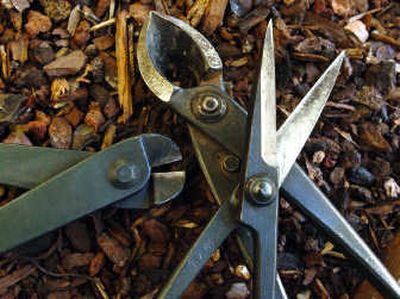It’s time to tidy up those garden tools

Happy day! The garden finally got nailed with a killing frost. I can quit for the winter.
There is one last chore to do before I can really lock the door on the tool shed, though. I need to clean and repair the tools that helped me work in the garden.
Basic tool care
Remove caked-on dirt from all tools. A wire brush will make fast work of even the hardest patches in hard-to-reach corners. If left on the tool, rust can set in and eventually reduce the life of the utensil. Rub all metal surfaces with a bit of used motor oil to further keep rust at bay.
If wooden tool handles are a bit rough, lightly sand with a fine grit sandpaper to remove burs and the potential for getting a sliver in your hand. Nothing can slow you down faster than a sore hand. Lightly oil the handles with a little linseed oil to extend their life.
Sharpen blades on cutting tools like pruners, loppers, shovels and hoes. It is amazing how much easier it is to use a tool if it is sharp. Pruning tools should be sharpened with a whetstone following the angle of the cutting edge. Hoes and shovels can be placed in a vise and sharpened with a mill file, again following the angle of the cutting surface.
Clean dirt off wheelbarrows and carts. Tighten any loose bolts and screws. Park them out of the weather so water doesn’t collect in them.
Drain all sprinklers and hoses to prevent freeze damage. Coil hoses so they won’t kink and store them out of the weather.
Triple-rinse any spray and fertilizer application equipment. The chemicals don’t hold through the winter and can freeze in the container damaging the seals (been there, done that). You will certainly forget what was in it by spring.
Last, remove caked-on dirt and grass from mowers, tillers, weed cutters and edgers. Tighten any loose bolts and inspect for metal fatigue. Run the equipment to remove the last of the fuel from the tank. Gasoline changes over the winter and can form deposits that can clog the carburetor and make it hard to start in the spring. Running the engine also warms up the oil, making it very easy to change. Dispose of it properly to avoid environmental damage. Sharpen cutting blades according to the manufacturer’s recommendations.
If you don’t want to do all this, now is a great time to take your equipment to your favorite repair shop before they get into snow-blower season. They aren’t as busy right now and you will miss the spring rush.